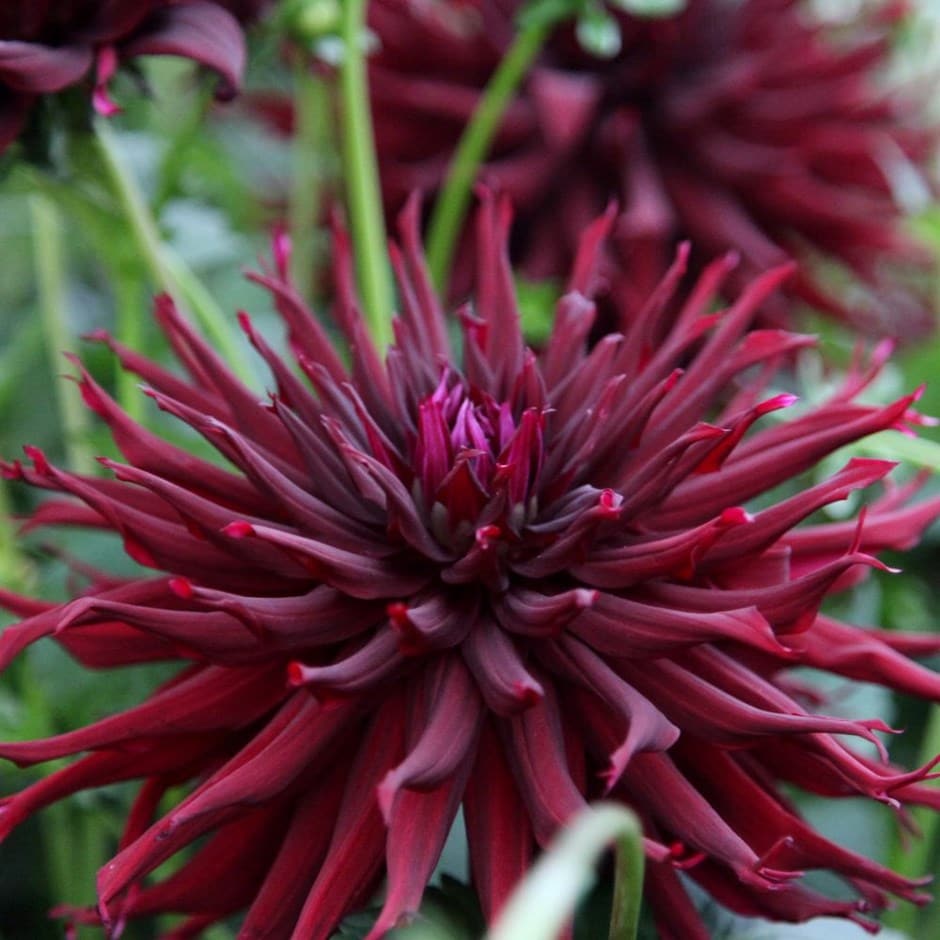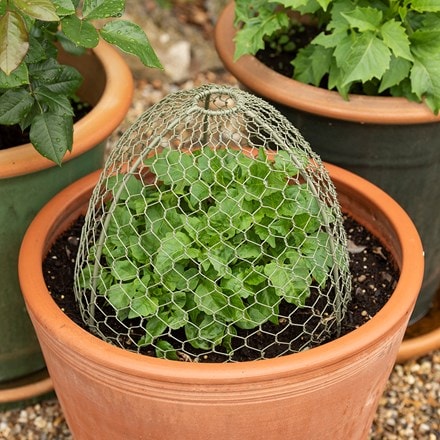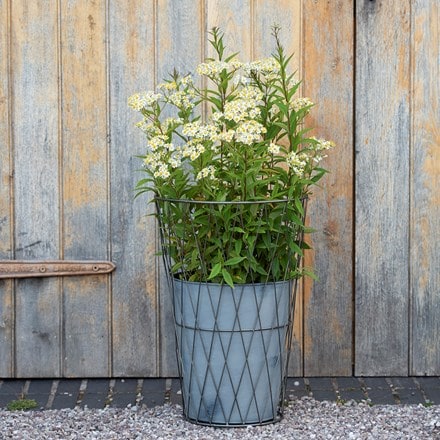Dahlia 'Black Narcissus'
cactus dahlia
- 1 × tuber
- £5.99
- Delivered by early February
- 3 × tubers
- £15.00 £5.00 each
- Delivered by early February
Delivery options
- Bulbs (only) £4.99
- Position: full sun
- Soil: oderately fertile, moist but well-drained soil, or general-purpose compost for containers
- Rate of growth: average
- Flowering period: July to September
- Hardiness: half hardy (may need winter protection)
This dramatic cactus dahlia stands out with its spidery, deeply quilled petals and near-black blooms flushed with deep maroon and hints of pink at the centre. Flowering from mid-summer to the first frosts, it adds bold contrast to mixed borders and works especially well with lighter or simpler flower shapes.
Each bloom can reach up to 20cm (8in) across, supported on tall, sturdy stems above mid-green foliage. Dahlia 'Black Narcissus' also makes an exceptional cut flower due to its long vase life and striking colour.
Each bloom can reach up to 20cm (8in) across, supported on tall, sturdy stems above mid-green foliage. Dahlia 'Black Narcissus' also makes an exceptional cut flower due to its long vase life and striking colour.
Dahlia tubers can be planted outside after frost, or started off in pots under glass in late winter to early spring. Plant them horizontally approximately 12cm deep, making sure the ‘eyes’ are uppermost. Allow enough room between each tuber so the plants can grow and spread to their full size without being over-crowded.
While in growth, provide a high-nitrogen liquid feed each week in June, then a high-potash fertiliser each week from July to September. Stake with canes or brushwood if it becomes necessary. In mild areas, leave them in situ over winter, but protect the crown with a generous layer of dry mulch.
In colder areas, carefully lift and clean the tubers once the first frosts have blackened the foliage and allow them to dry naturally indoors. Then place the dry tubers in a shallow tray, just covered with slightly moist potting compost, sand or vermiculite and store in a frost-free place until planting out again.
While in growth, provide a high-nitrogen liquid feed each week in June, then a high-potash fertiliser each week from July to September. Stake with canes or brushwood if it becomes necessary. In mild areas, leave them in situ over winter, but protect the crown with a generous layer of dry mulch.
In colder areas, carefully lift and clean the tubers once the first frosts have blackened the foliage and allow them to dry naturally indoors. Then place the dry tubers in a shallow tray, just covered with slightly moist potting compost, sand or vermiculite and store in a frost-free place until planting out again.
- Humans/Pets: Ornamental bulbs - not to be eaten
Goes well with
Large wire cloches Crocus green - set of 3
Ø31.5 × H28.5cm
£49.99
In stock (shipped within 2-3 working days)
Dahlia grow through ring support - rust
Ø50 × H73cm
£54.99
In stock (shipped within 2-3 working days)
Galvanised metal planter in lattice basket surround
pot Ø31 × H35cm
£54.99
In stock (shipped within 2-3 working days)






